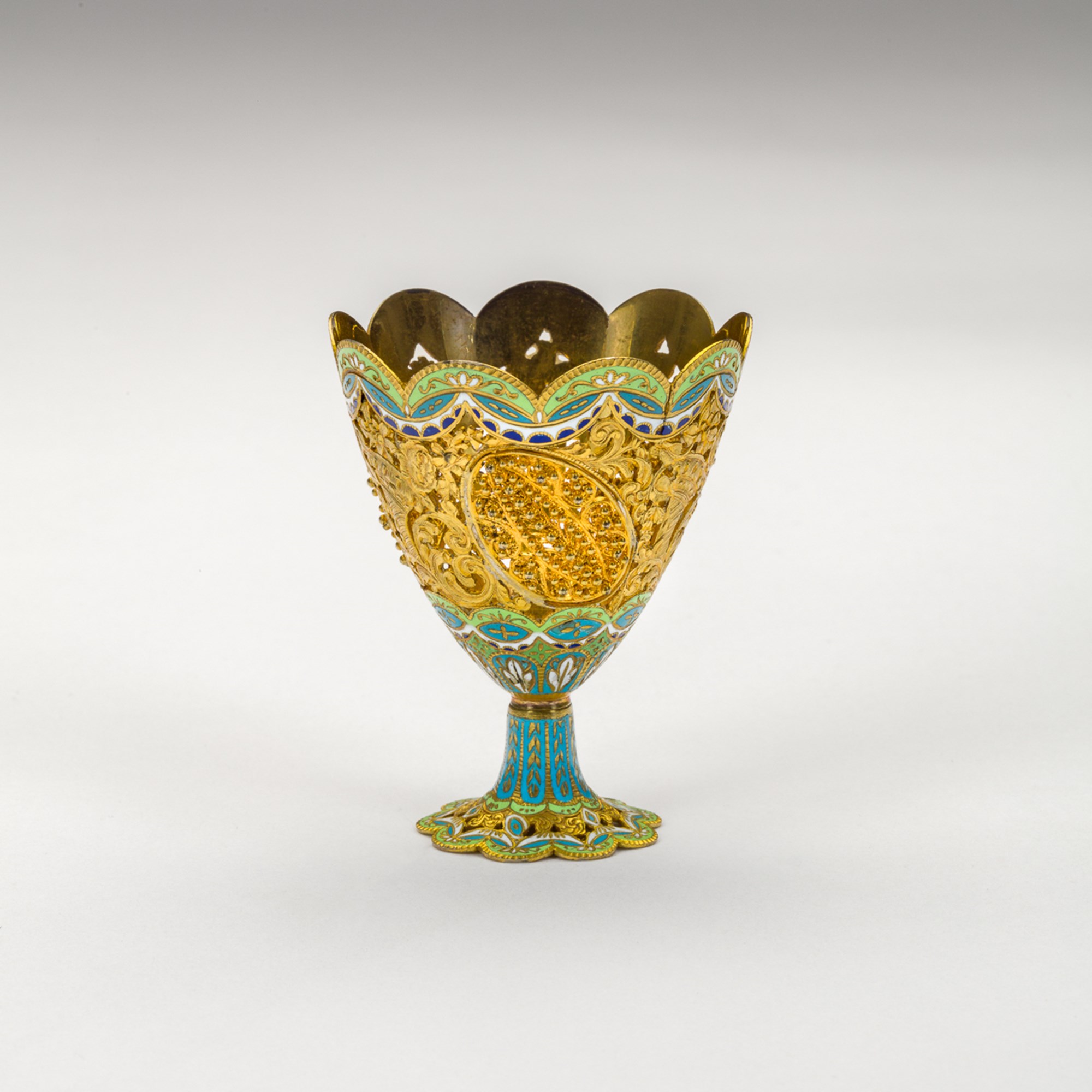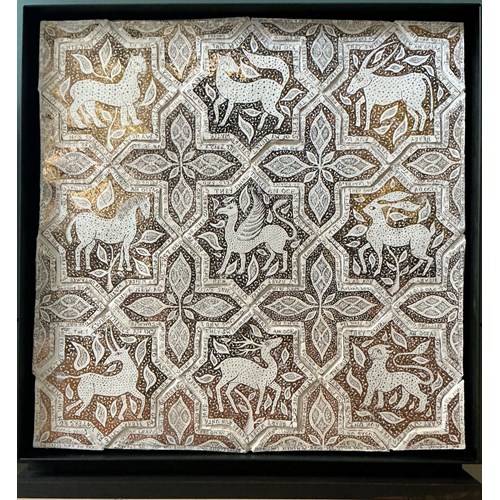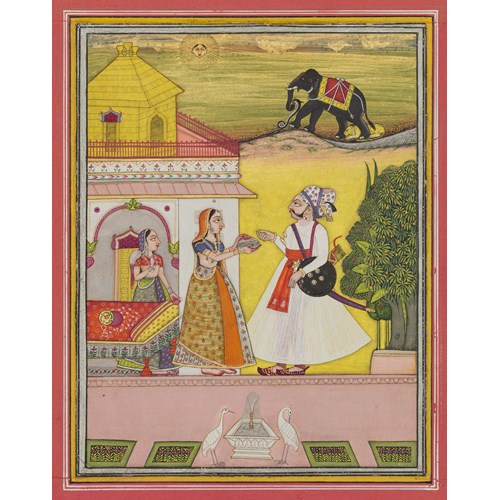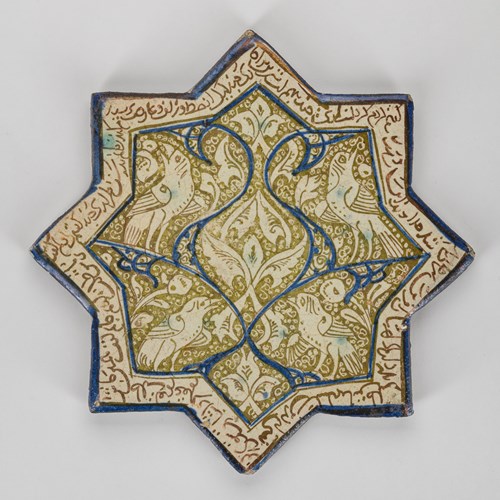Marketplace
Enamelled and Gilt Zarf for the Ottoman Market
The zarf is a decorative holder for a coffee cup without a handle (known as a fincan), used in the Islamic world.1
During the 19th century, enamel workshops in Geneva produced large numbers of zarf sets for the Turkish market. They were generally constructed from a basic silver gilt frame which could be customised with enamelled panels, filigree, or gems.2
This fine zarf has scalloped borders, the walls decorated with foliate openwork and oval filigree panels, the borders decorated with green, turquoise, navy blue, and white enamelling.
An example of a Swiss zarf, dated to c. 1840, is in the Metropolitan Museum of Art (accession no. 1976.285.14a,b). Three zarfs, dated to the mid 19th century, are held in the Khalili Enamels of the World collection (accession no. SW 180). The middle of the three bears particular resemblance, and was certainly made in the same factory. Another large collection is held in the Boghossian Foundation, Brussels.3
[1] Interestingly, the term is now used for cardboard sleeves on takeaway coffee cups.
[2] Williams, Haydn. 'Three Zarfs', Enamels of the World: 1700-2000. London: The Khalili Collections, 2009. cat. 57, p. 105.
3 Boghossian, Jean (ed.) Couleurs d'Orient, arts et arts de vivre dans l'Empire ottoman (catalogue), Brussels: Boghossian Foundation, 2010. pp. 87-89.
During the 19th century, enamel workshops in Geneva produced large numbers of zarf sets for the Turkish market. They were generally constructed from a basic silver gilt frame which could be customised with enamelled panels, filigree, or gems.2
This fine zarf has scalloped borders, the walls decorated with foliate openwork and oval filigree panels, the borders decorated with green, turquoise, navy blue, and white enamelling.
An example of a Swiss zarf, dated to c. 1840, is in the Metropolitan Museum of Art (accession no. 1976.285.14a,b). Three zarfs, dated to the mid 19th century, are held in the Khalili Enamels of the World collection (accession no. SW 180). The middle of the three bears particular resemblance, and was certainly made in the same factory. Another large collection is held in the Boghossian Foundation, Brussels.3
[1] Interestingly, the term is now used for cardboard sleeves on takeaway coffee cups.
[2] Williams, Haydn. 'Three Zarfs', Enamels of the World: 1700-2000. London: The Khalili Collections, 2009. cat. 57, p. 105.
3 Boghossian, Jean (ed.) Couleurs d'Orient, arts et arts de vivre dans l'Empire ottoman (catalogue), Brussels: Boghossian Foundation, 2010. pp. 87-89.
More artworks from the Gallery









